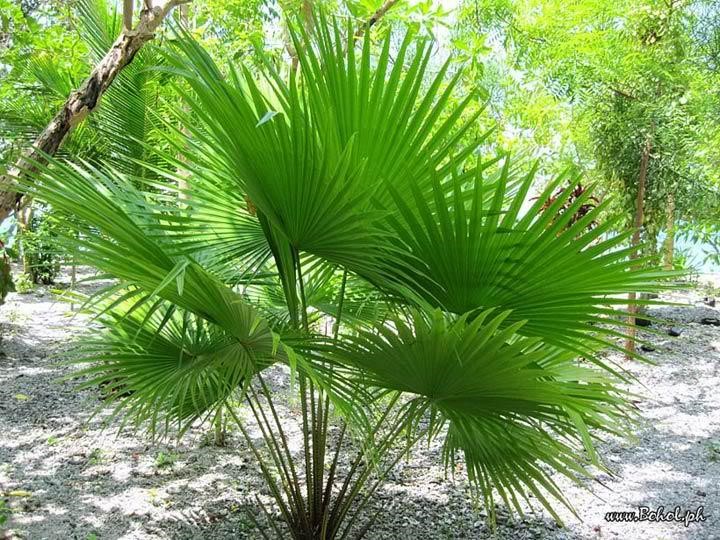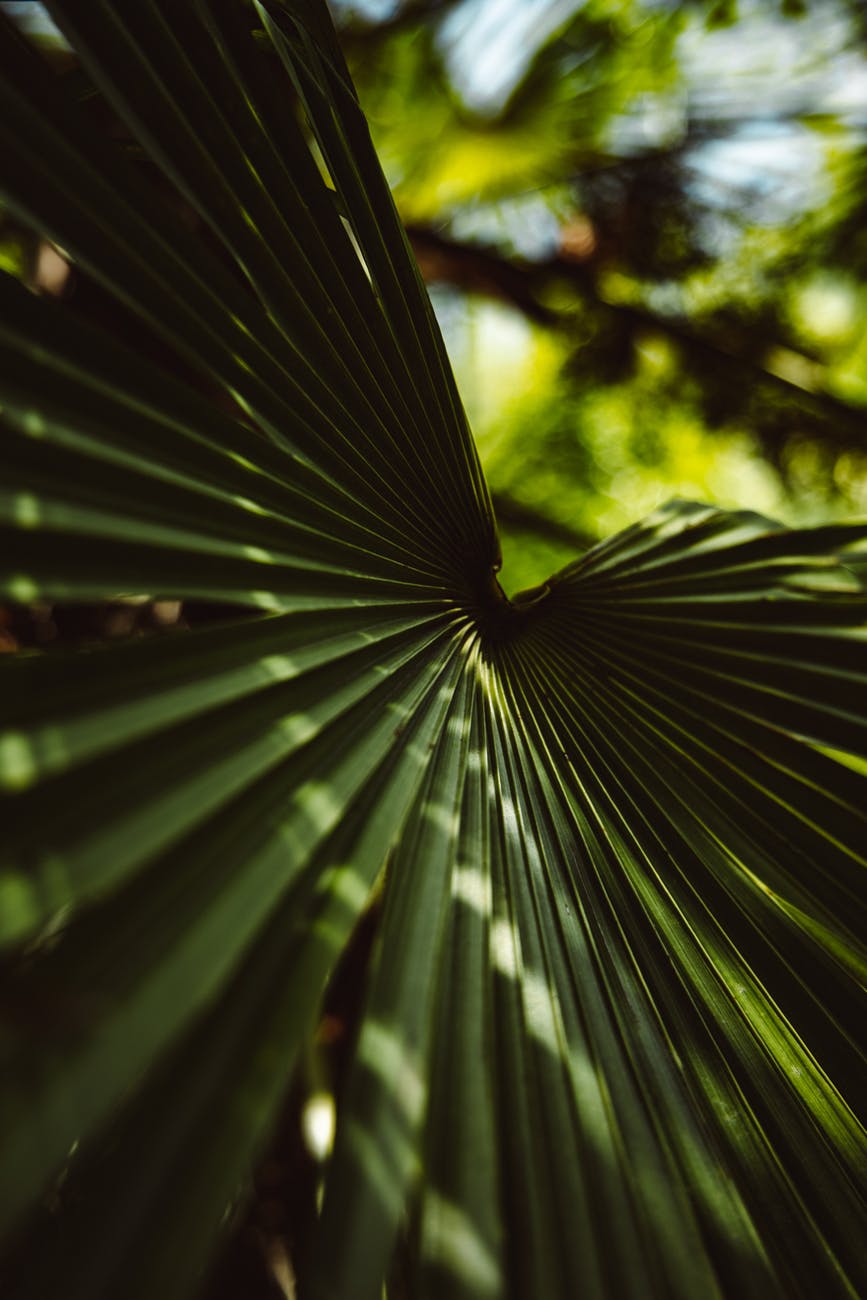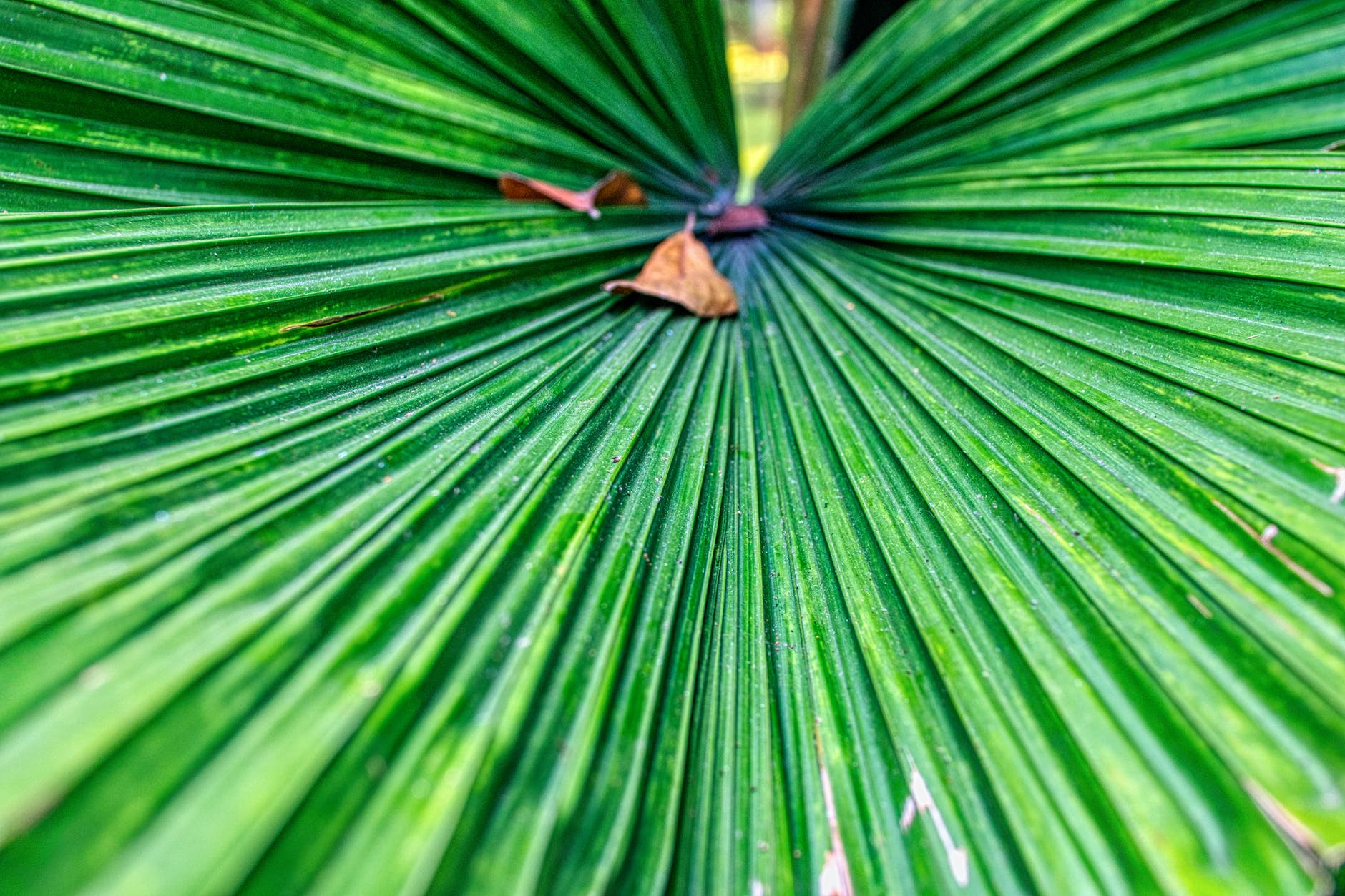
Description and Characteristics
Anahaw is a large, perpendicular palm that grows up to a height of 15 to 20 meters and 25 cm in diameter. As it matures, the leaves are packed at the top of the tree leaving a straight trunk marked with leaf scars. The part connecting the leaves and the trunk known as the “petiole” have hard thorns. Its green, fan-shaped leaves that grow up to one meter in diameter are pleated with approximately 2.5 to 4 cm per segment. It also produces small green flowers that develop into yellow fruits with 1.5 cm in diameter enclosing a hard, round, brown seed inside.




Location and Sources
Bill Number 3926, also known as “An Act Declaring The National Symbols of the Philippines” aims to make Anahaw the National Leaf of the Philippines. The species is common in almost all regions of the country especially in lowland forests of Benguet, La Union, Cagayan, Pangasinan, Zambales, Pampanga, Laguna, Quezon, Camarines, Albay, Negros, Cagayan de Oro, and in other provinces of Visayas and Mindanao. Anahaw palms are abundant in rural areas where people are able to create a variety of products and applications of the different parts of the palm.
Application and Product Output
Anahaw is used for both aesthetic and practical purposes. The bright, glossy, green leaves of a young Anahaw is very pleasing to the eyes making it a picture-perfect ornamental plant for indoor and outdoor. The nice-looking leaves are usually used as decorations in landscaping, occasions, bouquets, awards, and medals. Its wide leaves serve as wrappers for dry foods and other delicacies of each province. And with just a little trimming of the leaves, you can produce a hat and a fan to cool yourself on hot days. On the other hand, the mature leaves are commonly dried and used as roofing of houses which can last up to 15 years. Anahaw also has buds and shoots that can be cooked as vegetables. The strong and durable trunk is usually split into strips and used as flooring of marine vessels and houses. Moreover, the trunks can also be used as siding and foundation of a simple nipa hut, handle of tools, piles in fish pens and poles.

Production and Sustainable Consumption
With its wide range of uses coupled with the world’s rising demand for green and eco-friendly products, many locals in rural areas are growing anahaw for mass production of merchandise such as fans and roofing. To sustain this trend, the locals are continuing their production practices together with the new developments of government agencies. Locals’ seed technology referred as “folk technology” was supplemented by the government with the help of DENR-ERDS, Region V. There are many references for the processes regarding the production of Anahaw which involves Seed Technology (seed collection, storage, and extraction), Sowing and Transplanting, Site Preparation, Out-planting, Care & Maintenance, and Harvesting.
Naturally, anahaw palms are scattered in forests at low to medium altitudes and also grow on brushlands and under coconut plantations. Establishing anahaw plantation helps control soil erosion, provides shade and improves the environment being a typhoon-resistant intercrop. Anahaw is significant for both ecology and the socio‐economic environment.

As of now, demand for anahaw produce is not yet as high as that of abaca and rattan. Most of the consumption of anahaw are just for seasonal use and for small local businesses including roofing (for beach resorts, poultry farms, residential houses, training halls, etc.), wall decors, fans, anahaw poles for fishpens, hammock holders, tool handles, and flooring. Demand for anahaw produce is rising, and with the on-going economic and financial feasibility studies to determine the product’s visibility and to attract investors/entrepreneurs, Anahaw is a promising material to boost the country’s economy and “green industry”.
Supported by the Connections Through Culture programme of the British Council, our Materials Library Expansion Project is the first collaboration between UNESCO Creative Cities of Design #Cebu and #Dundee. #MATIC #CreativeDundee #BritishCouncilPh #BritishCouncilCTC
Works Cited
“Trees and their Management: Growing Anahaw”. Humanity Development 2.0 for sustainable development and basic human needs, http://www.nzdl.org/gsdlmod?e=d-00000-00—off-0hdl–00-0—-0-10-0—0—0direct-10—4——-0-1l–11-en-50—20-about—00-0-1-00-0–4—-0-0-11-10-0utfZz-8-00&a=d&c=hdl&cl=CL1.17&d=HASH01df274fb229ae826f6d2355.13#:~:text=Anahaw%20or%20anahau%20(Livistona%20rotundifolia,of%20the%20trunk%20and%20ascending. Accessed 13 January 2021.
“WHAT IS ANAHAW?”. Anahajuan, 4 Apr. 2019, https://anahajuan.home.blog/2019/04/04/what-is-anahaw/. Accessed 13 January 2021.
Berto. “What is an Anahaw?” .The Philippines Today, 2 Jul. 2019, https://thephilippinestoday.com/what-is-an-anahaw/. Accessed 13 January 2021.
Co, Ryanne. “National Symbols of The Philippines: A Quick Look In Time For The Independence Day 2020”. Tatler Publishing, 10 Jun 2020, https://ph.asiatatler.com/life/a-quick-look-at-the-national-symbols-of-the-philippines. Accessed 13 January 2021.
Domingo, Emmanuel, Ella, Arsenio. “Anahaw Production and Utilization”. ITTO Project, rev. 2, http://www.itto.int/files/itto_project_db_input/2910/Promotional/Anahaw%20Production%20and%20Utilization%20%5BCompatibility%20Mode%5D.pdf. Accessed 13 January 2021.





